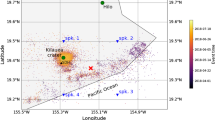Abstract
Virtual environments and their contents are dynamically changing, but also need to respond to the user immediately. While managing a dynamic scene is a common and well-understood problem for visual rendering, additional challenges exist for the high-quality audio rendering of such scenes. Audio rendering differs in a key aspect: Sound waves propagate substantially slower than light. For the acoustics in scenes of large dimensions, it is not sufficient to regard just the state at the current time. The sound propagation times become so significant (perceptible) that the past of the objects matter, making a time history of the scene necessary. Particularly the conjunction of multithreading and low-latency audio processing makes the description of the virtual acoustic scene a problem on its own. This paper presents a novel solution to this acoustic-related problem. We discuss the challenges of realizing a real-time auralization on modern (non-real-time) operating systems and state the main requirements of the data structure. A hierarchical state-based data structure with time history is presented, which not only fulfills the requirements for outdoor auralizations but also has key advantages for indoor simulations—such as room acoustics. A key feature is the integral support of atomic scene modifications, allowing several modifications to be performed at the same time. The presented concept is very modular and beneficial for a wide range of applications.






Similar content being viewed by others
References
Ahrens J, Geier M, Spors S (2008) The SoundScape renderer: a unified spatial audio reproduction framework for arbitrary rendering methods. In: Proceedings of audio engineering society (AES) convention 124, Amsterdam
Bar-Zeev A (2007) Scenegraphs: past, present, and future [Online]. http://www.realityprime.com/blog/2007/06/scenegraphs-past-present-and-future
Begault DR (2000) 3-D sound for virtual reality and multimedia [Online]. http://ntrs.nasa.gov/search.jsp?R=20010044352
Detlefs DL, Martin PA, Moir M, Steele GL Jr (2002) Lock-free reference counting. Distrib Comput 15(4):255–271
Gao H, Groote JF, Hesselink WH (2005) Lock-free dynamic hash tables with open addressing. Distrib Comput 17(1):21–42. https://doi.org/10.1007/s00446-004-0115-2
Herlihy M, Shavit N (2012) The art of multiprocessor programming. Elsevier, Amsterdam
Israeli A, Rappoport L (1993) Efficient wait-free implementation of a concurrent priority queue. In: Proceedings of 7th international workshop on distributed algorithms, series of lecture notes in computer science, vol 725. Springer, pp 1–17
Kuttruff H (2007) Acoustics: an introduction. CRC Press, Boca Raton
Laakso TI, Välimäki V, Karjalainen M, Laine UK (1996) Splitting the unit delay—tools for fractional delay filter design. IEEE Signal Process Mag 13(1):30–60
Michael MM (2002) High performance dynamic lock-free hash tables and list-based sets. In: Proceedings of the 14th ACM symposium on parallel algorithms and architectures. ACM, pp 73–82
Michael MM, Scott ML (1996) Simple, fast, and practical non-blocking and blocking concurrent queue algorithms. In: Proceedings of the 15th ACM symposium on principles of distributed computing, Philadelphia, pp 267–275
Morse PM, Ingard KU (1968) Theoretical acoustics. Princeton University Press, Princeton
Nystrom R (2014) Game programming patterns, Genever Benning
Richter J (1997) Advanced windows, 3rd edn. Microsoft Press, Redmond
Rizzi SA, Sullivan BM, Sandridge CA (2003) A three-dimensional virtual simulator for aircraft flyover presentation. In: Proceedings of international conference on auditory display, 2003, Boston
Rohlf J, Helman J (1994) IRIS performer: a high performance multiprocessing toolkit for real-time 3D graphics. In: Proceedings of the 21st annual conference on computer graphics and interactive techniques. ACM, New York, pp 381–394
Sahai A, Wefers F, Pick S, Stumpf E, Vorländer M, Kuhlen T (2016) Interactive simulation of aircraft noise in aural and visual virtual environments. Appl Acoust 101:24–38
Savioja L, Huopaniemi J, Lokki T, Väänänen R (1999) Creating interactive virtual acoustic environments. J Audio Eng Soc (JAES) 47(9):675–705
Silzle A, Novo P, Strauss H (2004) IKA-SIM: a system to generate auditory virtual environments. In: Proceedings of audio engineering society (AES) convention 116, Berlin
Smith JO, Serafin S, Abel J, Berners D (2002) Doppler simulation and the Leslie. In: Proceedings of workshop on digital audio effects (DAFx-02), Hamburg, pp 188–191
Strauss H (1998) Implementing doppler shifts for virtual auditory environments. In: Proceedings of audio engineering society (AES) convention 104, Amsterdam
Tanenbaum AS, Bos H (2014) Modern operating systems. Prentice Hall Press, Englewood Cliffs, pp 148–149
Taylor M, Chandak A, Antani L, Manocha D (2009) RESound: interactive sound rendering for dynamic virtual environments. In: Proceedings of the 17th ACM international conference on multimedia (MM’09), Beijing
Valois JD (1994) Implementing lock-free queues. In: Proceedings of the 7th international conference on parallel and distributed computing systems, pp 64–69
Valois JD (1995) Lock-free linked lists using compare-and-swap. In: Proceedings of the 14th annual ACM symposium on principles of distributed computing
Vorländer M (2011) Auralization: fundamentals of acoustics, modelling, simulation, algorithms and acoustic virtual reality. Springer, Berlin
Voss G, Behr J, Reiners D, Roth M (2002) A multi-thread safe foundation for scene graphs and its extension to clusters. In: Proceedings of the fourth eurographics workshop on parallel graphics and visualization (EGPGV 2002), Blaubeuren
Wefers F, Vorländer M (2015) Strategies for the real-time auralization of fast moving sound sources. In: Proceedings of internoise 2015, San Francisco
Wefers F, Stienen J, Vorländer M (2014) Interactive acoustic virtual environments using distributed room acoustics simulations. In: Proceedings of the EAA joint symposium on auralization and ambisonics, Berlin
Wenzel EM, Miller JD, Abel JS (2000) Sound lab: a real-time, software-based system for the study of spatial hearing. In: Proceedings of audio engineering society (AES) convention 108, Paris
Zölzer U (2008) Digital audio signal processing, 2nd edn. Wiley, New York
Author information
Authors and Affiliations
Corresponding author
Additional information
Frank Wefers is currently with HEAD acoustics GmbH. During the time of this research he was at RWTH Aachen University.
Rights and permissions
About this article
Cite this article
Wefers, F., Vorländer, M. Flexible data structures for dynamic virtual auditory scenes. Virtual Reality 22, 281–295 (2018). https://doi.org/10.1007/s10055-018-0332-9
Received:
Accepted:
Published:
Issue Date:
DOI: https://doi.org/10.1007/s10055-018-0332-9




